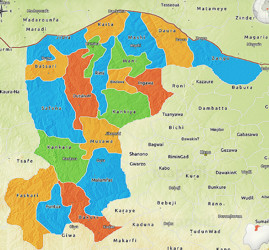Katsina State, popularly known as the ‘Home of Heritage and Hospitality,’ was carved out of the defunct Kaduna State in 1987. It is not only the cultural pacesetter of the region; it is also the birthplace of the seven historic Hausa states that form the nucleus of what is today Northwest Nigeria. It was a center for commerce and education (Islamic and Western) and also a gateway for Trans-Saharan trades from North Africa through West Africa. Additionally, it is characterized as an agrarian economy and serves as a center for the Northwest Geopolitical zone. The State is bordered in the East by Kano State, in the West by Zamfara State, in the South by Kaduna State, and in the North by the Niger Republic.



